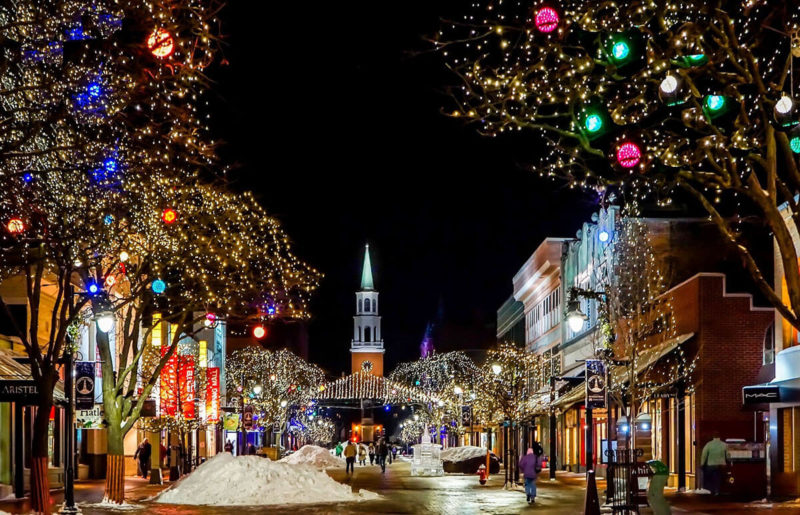Since the clocks went back an hour, evenings in the UK have been noticeably darker. Many people who work indoors may see very little daylight, or none at all, during the dark winter months. This can have a huge effect on a person’s mood, even causing a depressive condition called Seasonal Affective Disorder (SAD). We may often take it for granted, but making the most of our lighting, at home and in the workplace, can make this period of the year a lot more bearable. Read our suggestions below for some simple ways to optimise your winter lighting.
Replace your faulty light bulbs
This is a bit of a no-brainer, but make sure to replace those broken or blown light bulbs. If you have a light fitting housing multiple light bulbs, you might not be in a rush to replace a light bulb if only one of them blows. Even if you have enough light to see by, though, you could be straining your eyes without realising, which can lead to tiredness, headaches, and a general rundown feeling, exactly what you don’t need heading into winter.
Instead, be proactive and replace all the faulty light bulbs in your home as soon as you can. If you install LED light bulbs, you won’t have to worry about them blowing again, thanks to their low wattage and extra reliability.
Get to know colour temperatures
The colour temperature of a light bulb can make a significant difference to the look and feel of a room. By getting it wrong, you may be unwittingly causing yourself some unnecessary discomfort. We have a more extensive guide to colour temperature, but in short, it denotes how ‘warm’ or ‘cool’ the light from a light bulb is. Colour temperature is measured in Kelvins, which is abbreviated to ‘K’ on light bulb packaging. Lower ‘K’ numbers mean warmer, yellower light, while higher numbers denote cooler, bluer light.
While there is no strict rule for which colour temperature you should look for, each type has its place. If you want your living room or bedroom to be a cosy, relaxed place of sanctuary, a harsh, cool white light is not going to have the desired effect. Instead, you should look for warm white light bulbs, with a colour temperature anywhere between 2000K-3000K. The soft, yellowy light that these light bulbs emit will make you feel much more at home.
In workplaces and utility spaces, however, a cool white light bulb is often the right choice, as it will give you a crisper light to work by. Many kitchen and bathroom spotlights will have a colour temperature around 4000K, which is much more stimulating and perfect for being able to see exactly what you’re doing.
Get creative with your lighting over the holiday season
Winter celebrations give you the perfect opportunity to get creative with your lighting. Whether it’s for Guy Fawkes Night, Christmas, New Year, or any other celebration, mark the occasion with some decorative lighting. The versatility of LED lighting means that there is now something to suit any taste, whether it’s understated warm white lighting for the home and garden, or some eye-catching colour changing light bulbs that will stand out. The energy efficiency of LED light bulbs also mean you won’t have to worry about your electricity bills after you have draped your house in fairy lights for Christmas!
Don’t forget about outdoor lighting
A reliable outdoor light is a must during the winter. They provide extra security and act as a deterrent for opportunistic thieves, and also provide extra safety for homeowners who need to see what they’re doing after the sun sets.
There is a huge variety of outdoor floodlights available today, to the point where choosing one can seem a bit daunting. Start by picking one with an appropriate lumens output. For example, you don’t need to waste money on a high-powered 22,000 lumens floodlight just for a small garden or patio. Check the fitting and dimensions of any floodlight before you buy to make sure you can actually install it where you want. Finally, decide how you would like the light to activate. Do you simply want a light you can manually switch on and off from inside the house, or would you prefer a more sophisticated motion-activated light?
Thinking about these things before you start browsing products can make the search a lot easier. If you need any further guidance, have a look at our more in-depth guide to winter floodlights.
Ease Seasonal Affective Disorder with full spectrum light bulbs
Those who work indoors, particularly in offices, might not see much daylight during the winter, as the days are so short and the nights much longer. This can cause a depressive condition called Seasonal Affective Disorder (SAD). In some people, the extra darkness can elevate levels of melatonin, the hormone that affects sleep-wake cycles, which can cause fatigue, changes in mood, anxiety and other symptoms.
Full spectrum daylight bulbs can help those with SAD. This type of light bulb produces light with wavelengths across the full colour spectrum, closely replicating natural daylight. This can help ease the effects of SAD by regulating the levels of melatonin and serotonin (a hormone that helps with sleeping, eating and digesting, and which also affects mood), reducing anxiety and helping with sleep patterns.
It’s important for employers to recognise the effects of SAD on their employees. It is now a recognised disorder and can have a significant effect on productivity. Installing full spectrum lighting in environments that don’t see much sunlight can really boost the happiness and job performance of those working within them.
It’s important to note that there is a difference between ‘daylight’ light bulbs and ‘full spectrum daylight’ light bulbs. The former simply emit light with the same colour temperature as daylight (around 6500K), but don’t reproduce the full spectrum of light. These are no good for helping with SAD; only full spectrum daylight bulbs can do this.
Read more information about Seasonal Affective Disorder, including how it can be treated.




